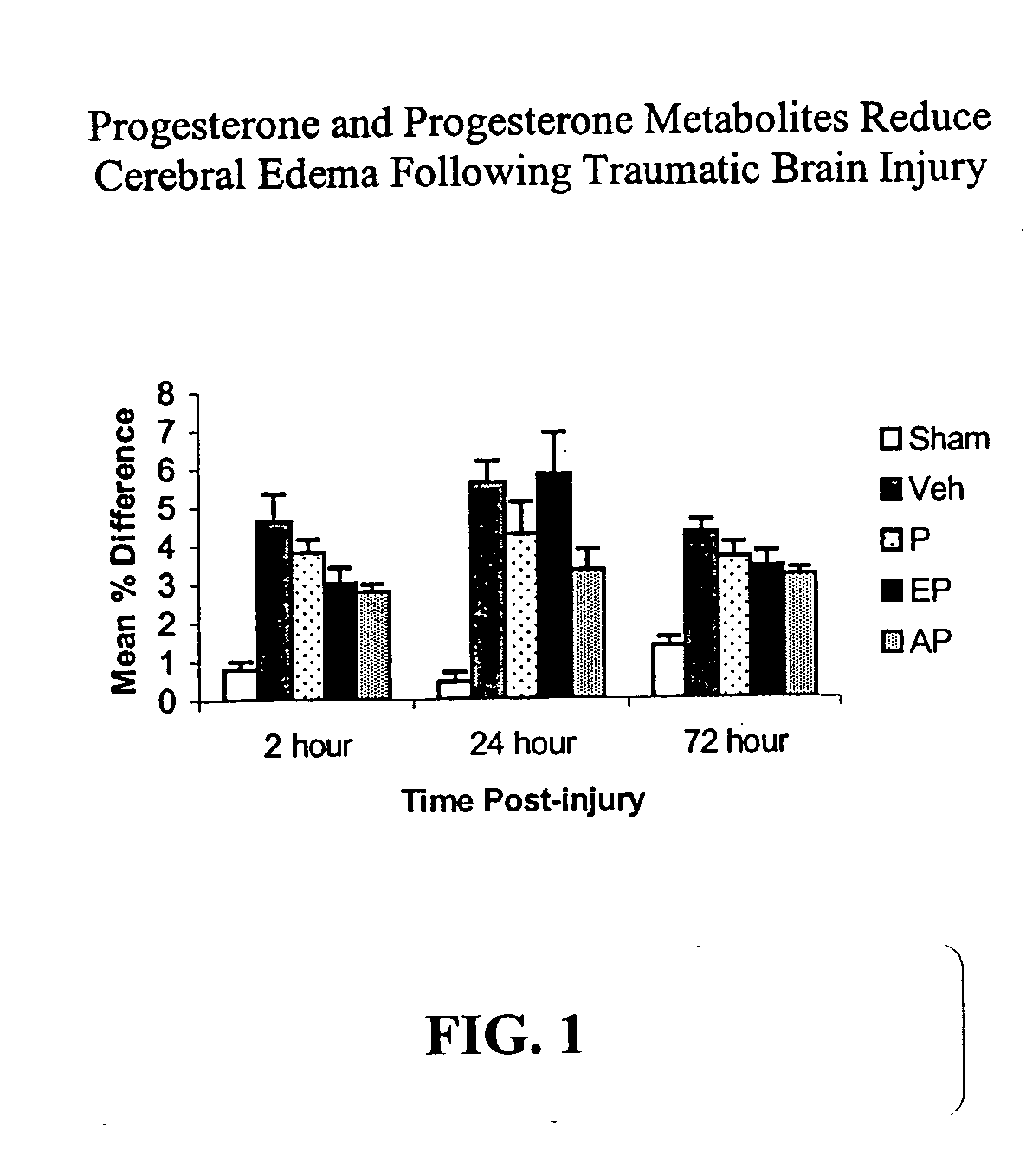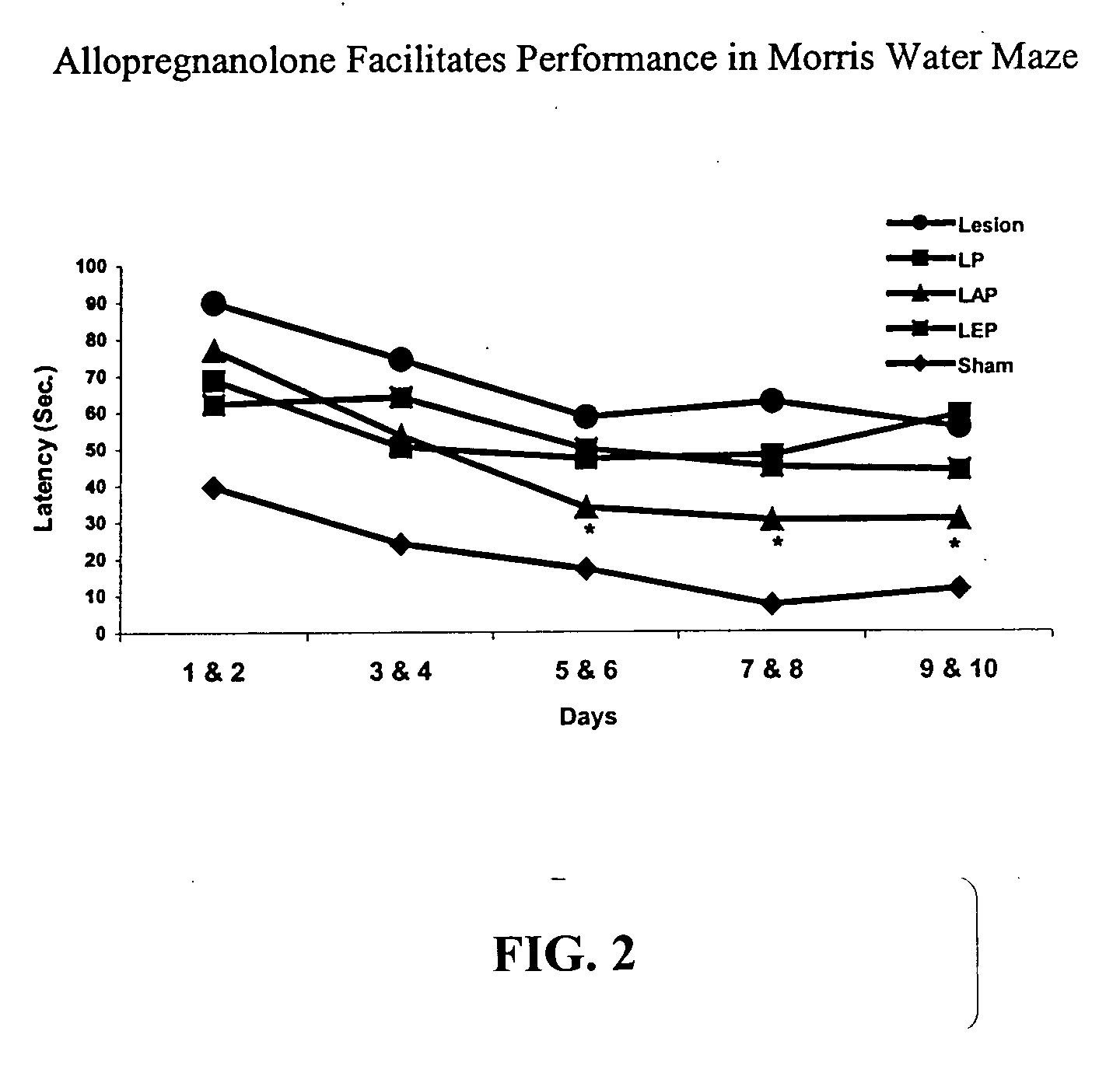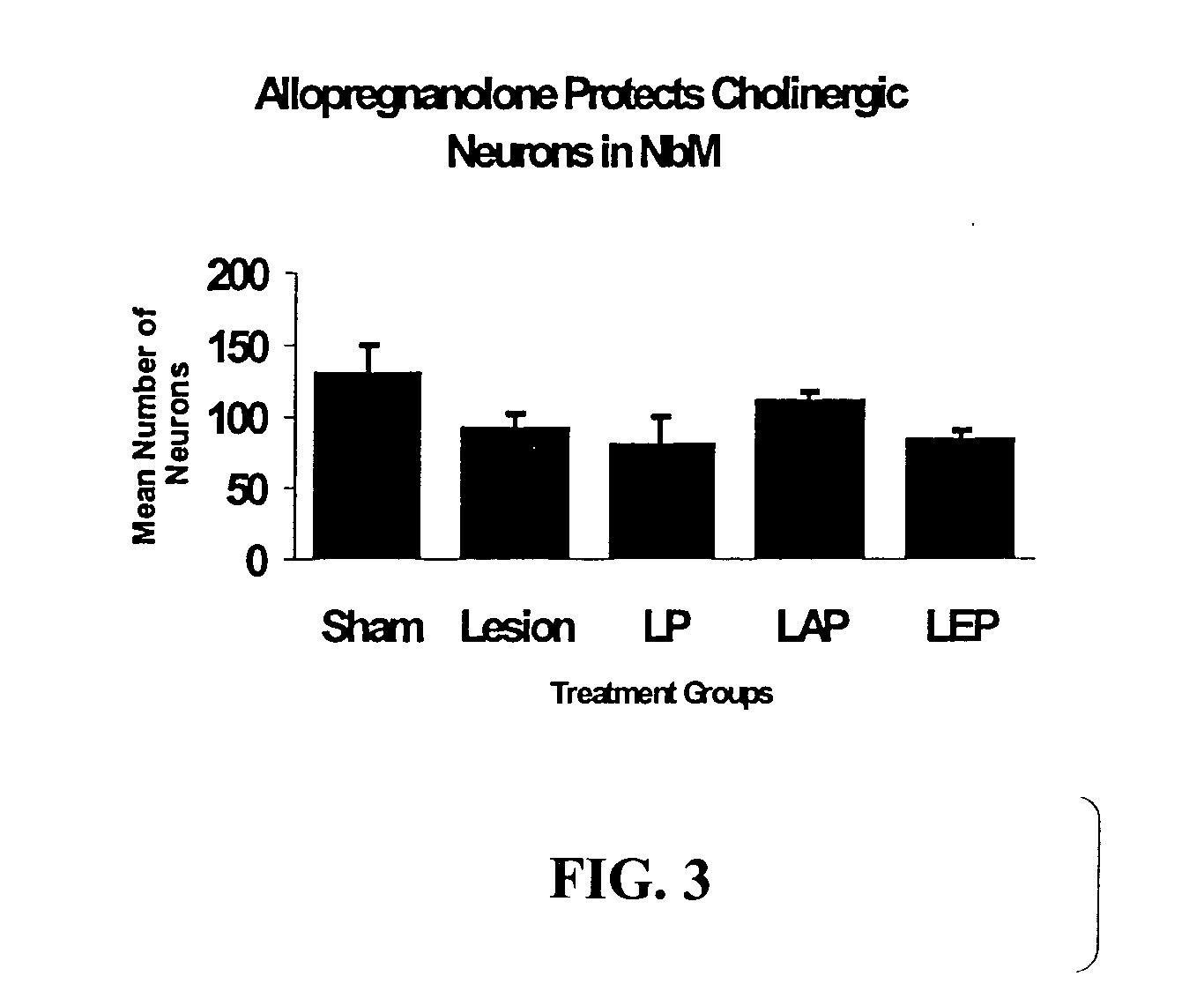Methods for the treatment of a traumatic central nervous system injury
a central nervous system and traumatic technology, applied in the field of traumatic central nervous system injury treatment, can solve the problems of increasing patient mortality, secondary cell death, etc., and achieve the effects of reducing cerebral edema and/or the inflammatory response, preventing neuronal damage, and treating or preventing neuronal damag
- Summary
- Abstract
- Description
- Claims
- Application Information
AI Technical Summary
Benefits of technology
Problems solved by technology
Method used
Image
Examples
example 1
Effectiveness of Progesterone Metabolites in Reducing Post-Injury Edema
[0064] Contusions to the medical frontal cortex (MFC) using a pneumatic impactor device were generated. Animals were anesthetized by injection of Nembutal (50 mg / kg, i.p) and placed in a stereotaxic apparatus, with body core temperature being maintained with a homeothermic heating blanket system. Using aseptic techniques, a midline incision was made in the scalp, and the fascia retracted to expose the cranium. A centered, bilateral craniotomy was made 3 mm anterior to bregma using a 6 mm diameter trephan. After the removal of the bone, the tip of the impactor was moved to AP:3.0; ML:0.0, checked for adequate clearance, retracted to its elevated position and lowered 3.5 mm DV, so it penetrated the cortex 2 mm. The contusion was made at a velocity of 2.25 m / s with a brain contact time of 0.5 seconds. Following this procedure, the wound cavity was thoroughly cleaned and all bleeding stopped before the fas...
example 2
Effects of Allopregnanolone on Behavioral Recovery Following Traumatic Brain Injury
[0070] Contusions to the MFC were carried out as described in Example 1.
Group Assignment an Drug Treatment:
[0071] Adult male rats were given 5 injections of either vehicle (cyclodextrin), progesterone, allopregnanolone, or epipregnanolone (all at 4 mg / kg). These injections started at one hour post-injury with an intraperitoneal injection, and then were repeated at 6, 24, 48, 72, 96, and 120 hours post-injury with subcutaneous injections.
MWM Testing Procedure:
[0072] The Morris Water Maize (MWM) consisted of a circular tank with a diameter of 133 cm filled with opaque water (20±1° C.; non-toxic Artista™ nontoxic white tempura paint) to a depth of 64 cm (23 cm from top of tank). A platform (11 cm×11 cm) was submerged to a depth of 2 cm and placed approximately 28 cm from the wall of the pool in the center of the northeast quadrant. The position of the platform will remain constant throug...
example 3
Ability of Allopregnanolone to Decrease Inflammatory Immune Reactions
[0075] By reducing the inflammatory response to injury, a substantially reduction in brain swelling and intracranial pressure can follow. Another consequence of reducing the inflammatory immune response is that less neurotoxic substances (e.g., free radicals and excitotoxins) will be released. Reducing the release of neurotoxins from immune cells will result in greater neuronal survival and behavioral recovery after traumatic brain injury by reducing oxidative stress.
I. Increase in mRNA Inflammatory Cytokines after TBI
[0076] We have shown that progesterone and its metabolite allopregnanolone reduce cerebral edema and improve spatial performance in a rodent model of traumatic brain injury, but the specific mechanisms leading to recovery are not known. We do know however, that in addition to edema and cell loss, TBI leads to significant increases in inflammatory cytokines (e.g., IL-1β and TNFα), which in turn con...
PUM
| Property | Measurement | Unit |
|---|---|---|
| body weight | aaaaa | aaaaa |
| body weight | aaaaa | aaaaa |
| body weight | aaaaa | aaaaa |
Abstract
Description
Claims
Application Information
 Login to View More
Login to View More - R&D
- Intellectual Property
- Life Sciences
- Materials
- Tech Scout
- Unparalleled Data Quality
- Higher Quality Content
- 60% Fewer Hallucinations
Browse by: Latest US Patents, China's latest patents, Technical Efficacy Thesaurus, Application Domain, Technology Topic, Popular Technical Reports.
© 2025 PatSnap. All rights reserved.Legal|Privacy policy|Modern Slavery Act Transparency Statement|Sitemap|About US| Contact US: help@patsnap.com



